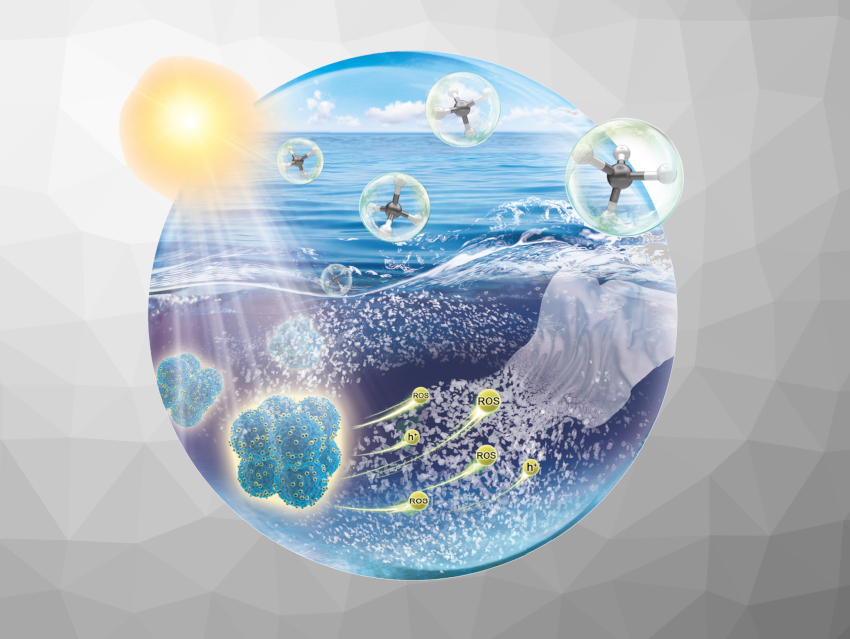In this issue, C. Wu et al. review biocatalytic syntheses with self-assembled nano- and microreactors, and M. Armand et al. discuss organic electrolyte design for rechargeable batteries from lithium to magnesium. The Minireviews deal with long-range interactions in diatomic catalysts that boost electrocatalysis (D. Wang et al.) and electrochemical CO2 reduction in the presence of impurities (N. J. Harmon, H. Wang).
In the original research section, C. von Hänisch et al. describe the synthesis and application of alkali metal antimonide in a new approach to antimony chemistry. L. Gan et al. used an open-cage fullerene as a molecular container for halide anions. S. Howorka et al. found a light-triggered synthetic nanopore to control molecular transport across biological membranes, and Y. Xiong et al. present a sustainable conversion of microplastics to methane with ultrahigh sensitivity by a biotic–abiotic hybrid photocatalytic system (see picture).
- Angewandte Chemie 52/2022: Long-Range Interactions,
Angew. Chem. Int. Ed. 2022, 61 (52).



